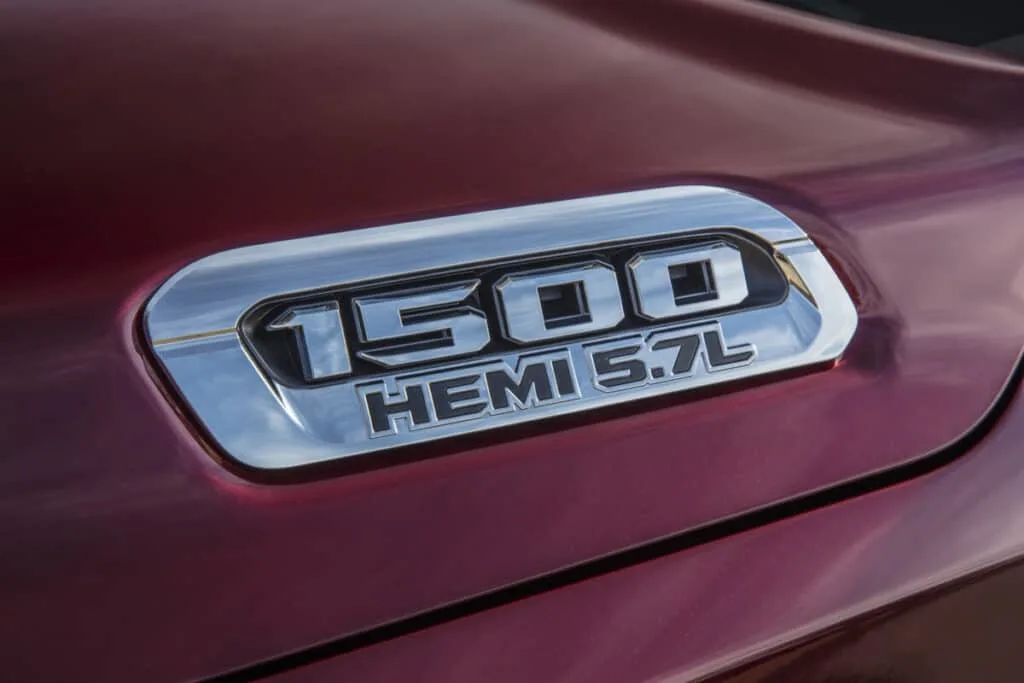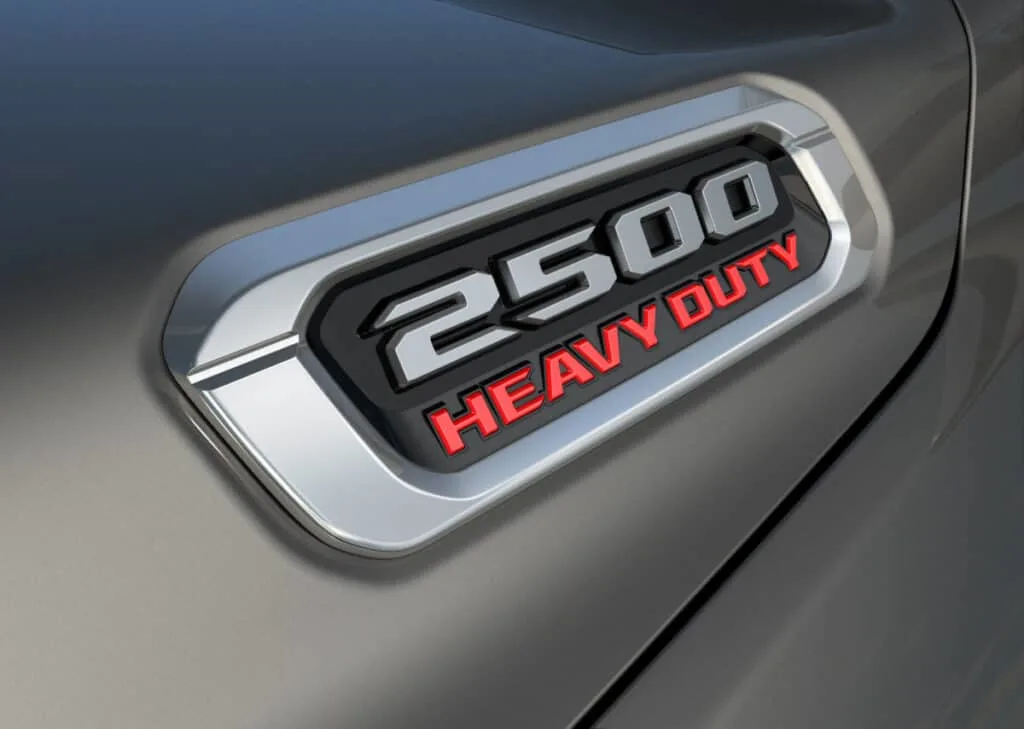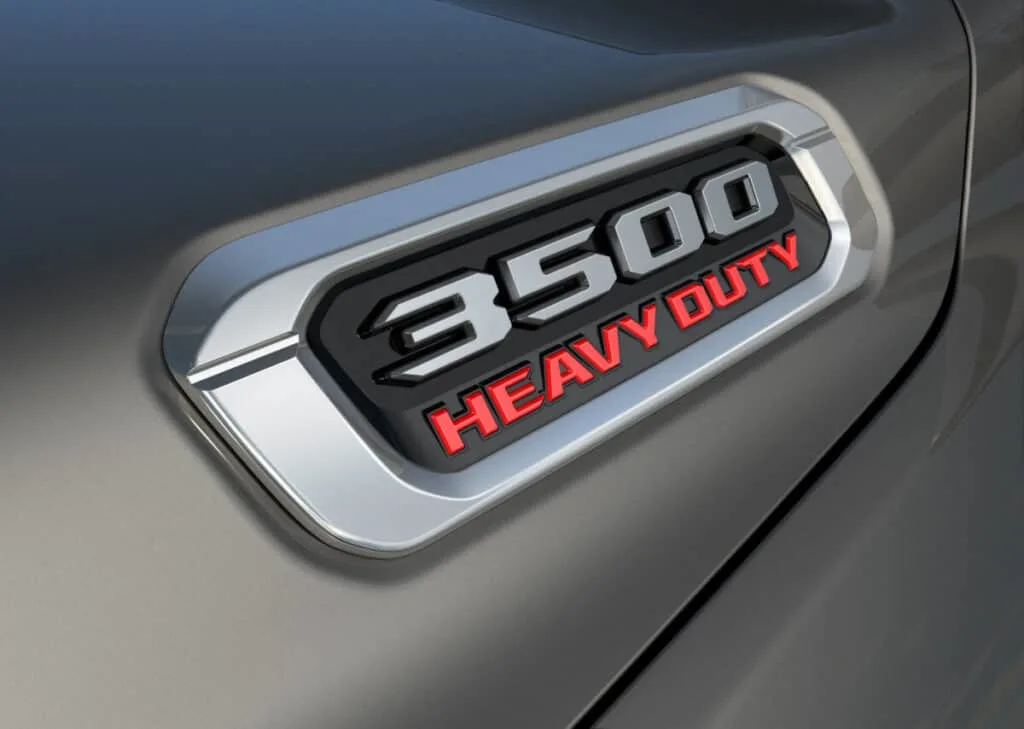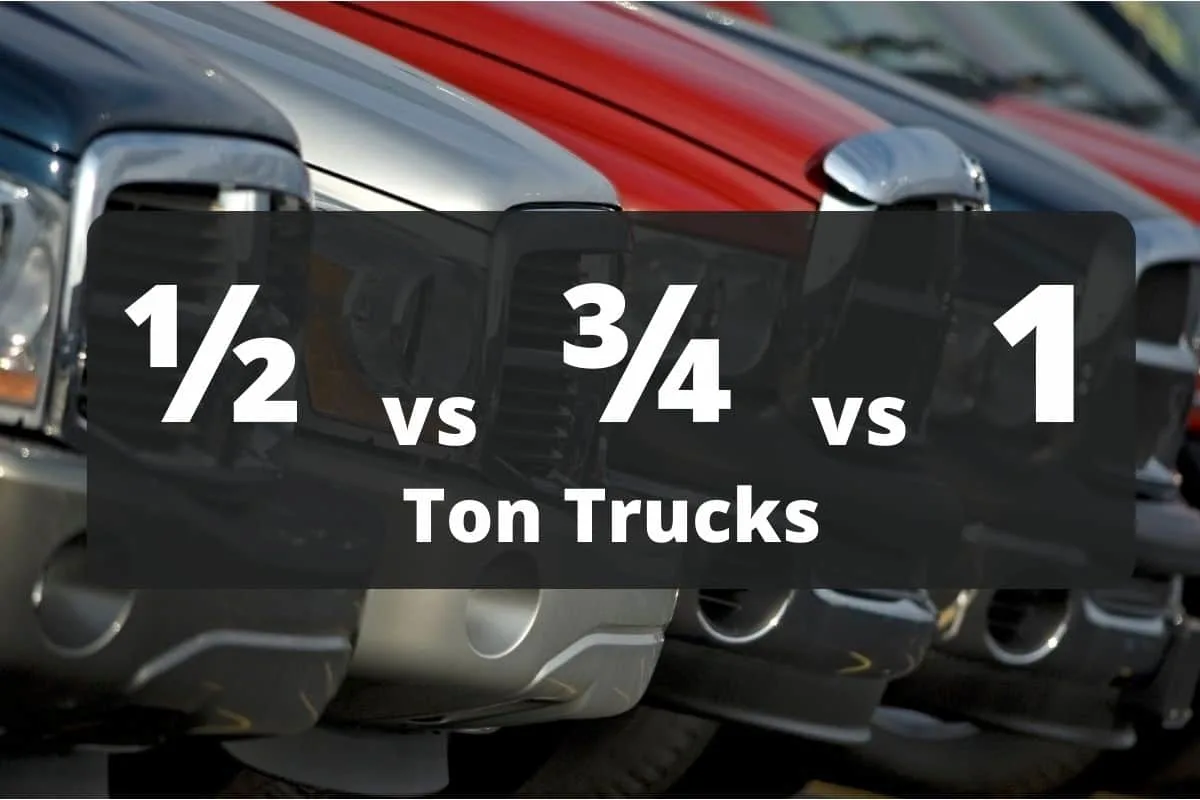For anyone that has gone out looking for a new pick-up truck, then you’ve probably heard the terms ½ ton, ¾ ton, and 1-ton trucks. These terms must be confusing to someone who isn’t already familiar with trucks and their taxonomy classification.
So, what do these terms mean, and how do they explain the capability of each truck?
What Does Truck Tonnage Refer To?
Half-ton, three-quarter-ton, and one-ton are pickup truck and SUV classifications based on their payload capacities. When referring to 1/2 Ton, 3/4 Ton, 1 Ton trucks, refers to 1,000, 1,500, and 2,000 pounds respectively of their payload capacities.
However, these are just vague classifications and don’t tell the exact weight a truck can carry!
By definition, the payload is the maximum amount of weight a truck is allowed to carry both in its cabin and bed. It includes the passengers or luggage in the cabin, the cargo in the bed, and the torque weight.
The torque weight refers to the weight exerted by a trailer on a tow hitch during a tow.
Previously, the truck tonnage was the amount of payload a vehicle could support. One ton was 2000 pounds, which means that a three-quarter-ton vehicle could only support 1500 lbs. of passengers, cargo, and trailer torque weight.
The terminology has since evolved, although manufacturers have kept the taxonomy so that consumers can quickly identify the capabilities of the truck they want to buy.
Most half-ton trucks today can carry a payload of up to 2000 lbs. The same goes for three-quarter-ton trucks that can carry 2 tons and some one-ton even more.
It’s confusing that the payload classification in name cannot be relied upon. It’s, therefore, necessary for a buyer to check either the gross vehicle weight rating or the trucks’ published payload rating to know for sure how much a truck can genuinely carry.
Read on to discover the different types of trucks and compare their diverse capabilities!

What Is a Half-Ton Truck?
These are the most common of all pickup trucks. They are also referred to as full-size or light-duty pickups.
People that buy these vehicles usually use them for personal use or light commercial duties. A normal half-ton truck can tow small trailers or haul furniture.
They are fitted with many comfort amenities that passenger vehicles have. This makes them very comfortable to drive.
It can haul about 3,000 pounds in its bed and can tow approximately 9,000-10,000 pounds with the right powertrain.
Popular Half-Ton Trucks
- Ford F-150
- Ram 1500
- Chevrolet Silverado 1500
- GMC Sierra 1500
- Nissan Titan
- Toyota Tundra
- Ford F-150 Raptor

What Is a Three-Quarter-Ton Truck?
The three-quarter-ton truck is referred to as heavy-duty because of its high hauling and towing capacity. They are also known as the 2500 series pickup trucks.
The 250 or 2500 numbers in their names often refer to the model in the series.
They are mostly diesel-powered with an automatic transmission but can also have big gasoline engines. Despite their enhanced capabilities, they are manufactured to maintain drivability.
It can haul about 4,000 pounds in its bed and can tow nearly 14,000 pounds with the right powertrain!
It’s a good choice for someone that works in construction to move their equipment and building materials. It can also be helpful in towing an RV or a boat trailer.
Popular Three-Quarter-Ton Trucks
- Ford Super Duty F-250
- Ram 2500
- Chevrolet Silverado 2500
- Chevrolet Silverado 2500 HD
- GMC Sierra 2500
- GMC Sierra 2500HD
- Nissan Titan XD

What Is a One-Ton Truck?
The one-ton truck is manufactured with hauling and towing capabilities as the top priority. Some are capable of towing just over 35,000 lbs. They come equipped with trailer brakes, dual rear wheels, and larger engines.
The numbers “350” or “3500” refer to the model of the truck in the series.
Nissan and Toyota Manufacturers don’t have one-ton trucks. The one-ton pickup trucks are the highest class sold through consumer dealers. If commercial buyers require something bigger, they have to go to special dealerships to get it.
It can haul about 6,000 pounds in its bed and can tow nearly 36,000 pounds with the right powertrain. It can be an asset to someone who wants to tow large RVs and boats.
It’s also a good choice for a trade person, especially if their geographic location has steep grades.
Popular One-Ton Trucks
- Ford Super Duty F-350
- Ram 3500
- Chevrolet Silverado 3500
- GMC Sierra 3500
- Dodge Ram 3500 Heavy Duty
- Ram Chassis Cab
Trucks Larger Than One Ton
Some manufacturers make special trucks for companies that need trucks with more capacity than that on the one-ton truck.
While the vehicle will be great for towing and hauling, the drawback is usually they are not comfortable to drive.
They are numbered “450” or “4500,” and up for their model numbers are generally fitted with specialty equipment.
Examples of Trucks That Exceed One Ton
- Ford F-450
- Ford F-550
- Ford F-650
- Ford F-750
- Chevrolet Silverado 4500 HD
- Chevrolet Silverado 5500 HD
- Chevrolet Silverado 6500 HD
- Ram 4500
- Ram 5500
Trucks Smaller Than a Half Ton
They are referred to as small pickup, compact pickup, or midsize pickups.
Compared to full-size pickups, they are smaller in size, have less towing and hauling capabilities, and are significantly less powerful.
They are, however, easy to park and have better fuel economy compared to full-sized pickups!
Examples of Midsize Trucks
- Chevrolet Colorado
- Ford Ranger
- GMC Canyon
- Honda Ridgeline
- Jeep Gladiator
- Nissan Frontier
- Toyota Tacoma
How to Choose the Best One-Ton Truck for Your Business
1. Payload Capacity
Consider the amount of weight it will have to carry. It’s better to go with a higher number so that you can prevent disappointments in the future.
2. Towing Capacity
If you intend to tow trailers and dollies, it’s better to overestimate the figure just to be safe.
3. Fuel Type
Buy the truck you need based on the fuel that you intend to use. The terrain you plan to drive on and if you need the truck for towing purposes will also help you decide on a particular fuel type truck.
Diesel trucks cost and weigh more than gas-powered trucks. It also requires more maintenance despite being cost-effective in the long run, depending on annual mileage and driving habits.
4. Estimated Annual Mileage
A diesel truck is a better choice than if you travel an estimated distance of 30,000-35,000 miles. However, you might have to do more research based on your overall needs.
5. Cost
This will entirely depend on your budget, but there are still excellent options at an affordable price.
6. Cab Configuration
There are a number of cab configurations to choose from, such as:
- The regular cab (two front doors)
- The extended cab (two front doors and smaller half doors)
- The crew cab (four equal full-size doors to carry more people)
7. Drivetrain
Pick the drivetrain based on your geographic location and your intended payload and towing needs. The following are some of the drivetrains you can choose from:
- rear-wheel drive (RWD)
- front-wheel-drive (FWD)
- all-wheel drive (AWD),
- two-wheel-drive (2WD, 4×2)
- four-wheel drive (4WD, 4×4)
8. Single Rear Wheels (SRW) Or Dual Rear Wheels (DRW)
Your choice here might be predetermined based on the GVWR of the truck you want. The higher the GVWR trucks will often come with DRW.
9. Snow & Ice Applications
This option is only helpful if you live in a location with snow or will likely be driving in such a location.
10. Truck Bed Length
This will depend on the cargo you intend to transport on your truck bed. If you want to move long planks of wood, you might consider a long bed.
What Is the Gross Vehicle Weight Rating?
The Gross Vehicle Weight (GVW) is the actual weight of a trailer or a truck, including its body and equipment, fuel and fluids, occupants, and loaded payload weight at the time of measurement. It is static because the occupants can change and a vehicle with less fuel and fluids is lighter.
The Gross Vehicle Weight Rating (GVWR) refers to the maximum legal operating weight of a car set by the federal government and the original vehicle manufacturer. The rating usually includes the gross vehicle weight (GVW) and is permanent.
The GVWR is vital because it is what typically determines the class of a vehicle. As a buyer, you should look at the GVWR carefully because there are certain regulations and special licenses that might be needed to operate a vehicle in a certain class.
| Class | GVWR |
| Class 1 | 0-6,000 lbs. |
| Class 2 | 6,001-10,000 lbs. |
| Class 3 | 10,001-14,000 lbs. |
| Class 4 | 14,001-16,000 lbs. |
| Class 5 | 16,001-19,500 lbs. |
| Class 6 | 19,501-26,000 lbs. |
| Class 7 | 26,001-33,000 lbs. |
| Class 8 | 33,001 lbs. + |
Conclusion
Trucks differ in size, and the choice will depend on your needs. The 1500, 2500, and 3500 nomenclature is just a naming system by different manufacturers to denote a truck’s payload and towing capability.
Although it’s not necessarily accurate with today’s vehicles, it’s what people are used to, and it’s easy to understand. It’s, however, essential to note that the bigger the number, the more powerful the truck.
